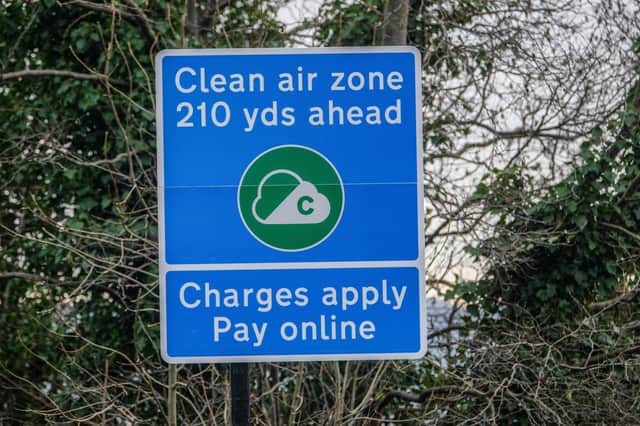Clean Air Zone: How Sheffield scheme - which has raked in more than £3m - could have been so different
and live on Freeview channel 276
Sheffield’s Clean Air Zone was always going to be controversial - it raked in £3.3m in its first eight months - but it certainly hasn’t gone as expected.
The pollution-busting measure sparked an avalanche of protest when it was introduced on February 27, with many motorists saying they weren’t ready and compensation schemes were inadequate.


Advertisement
Hide AdAdvertisement
Hide AdBut they failed to have it scrapped or changed and now, as 2023 draws to a close, more than 100,000 drivers have received penalty charges and a further 70,000 have been fined for not paying.
But it could all have been so different - it should have been launched years ago.
Proposals were agreed by the council in November 2018. But it wasn't until 2020 the government offered £24m to pay for installation costs and upgrade vehicles.
By 2021, the Greens were accusing the Labour administration of sitting on the cash because they feared it would be a vote loser.
Advertisement
Hide AdAdvertisement
Hide AdLabour said it was to reduce costs in the pandemic. Cleaner air due to less traffic during lockdowns also appeared to reduce the urgency to crack on with it.
But the council was also saying air pollution contributes to 500 deaths a year and the biggest cause is transport, especially diesel vehicles.
The CAZ charges older diesel vans and taxis £10-a-day to travel on, or within, the inner ring road. Older coaches, buses and lorries are charged £50-a-day.
The Government eventually put the pressure on, warning funding could be clawed back and the authority was ‘subject to a legal duty’ to bring it in.
Advertisement
Hide AdAdvertisement
Hide AdIn 2022 the council said it would start in February 2023, some two years after a deadline and more than four years since it was agreed.
Initially it was forecast to catch 2,000 drivers and rake in £23,000 every day - some £8.46m-a-year. In reality, the figure is on track to be about £5m.
Even before it was launched small firms were complaining about difficulties accessing the council’s funding schemes for new vehicles.
Later, they were joined by people complaining over delays in issuing penalty charges and difficulties appealing against them.
Advertisement
Hide AdAdvertisement
Hide AdThere were also rows over exemptions and whether some vehicles were cars or vans.


And in July the council revealed it would have to refund nearly £500,000 because of a printing error on fines.
By November the authority was fielding questions about what the income would be spent on and whether the air was cleaner.
But councillors said it was too soon because pollution was assessed annually.
Advertisement
Hide AdAdvertisement
Hide AdIncome from charges and fines will be spent on projects to improve air quality including ‘School Streets’ which cut cars near schools and encourage active travel.
But the cost of the scheme was £4,258,746, almost £1m more than it raised in the first eight months.
So spending any ‘profits’ may have to wait until 2024 - as will any confirmation of a reduction in deaths.
Comment Guidelines
National World encourages reader discussion on our stories. User feedback, insights and back-and-forth exchanges add a rich layer of context to reporting. Please review our Community Guidelines before commenting.